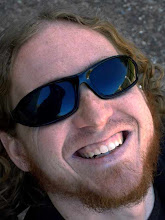Feminism and Television grew up together in the Twentieth century. The first wave of feminism, the suffragettes, was in the nineteenth and early twentieth century; while the television was first patented in 1884 and the first instantaneous transmission in 1909. Second wave feminism, which is still working with third wave feminism today, began in the early 1960’s; while commercial licenses were given out for television starting in 1941 and were in every state in the United States by 1954.
More than time links these two advances. Television has grown steadily in popularity since its inception. In the 1950’s, homes started filling up with televisions and today it is typical for a household to have multiple sets that get over 75 channels, with the top show averaging over 14 million viewers. Many of the shows in the past 25 years of television, have shown the growing influence of the feminism movement by being a thermometer of the culture or by showing something closer to an ideal of what the feminism movement would like to see.
In this paper, I will explore how television can be used as a method to further a social movement through normalization by looking at “The Mary Tyler Moore Show” and the feminist movement.
Feminism
Feminism can mean many different things, depending on who is using it, and in what context. For the purpose of this paper, we will use the American Heritage Dictionary’s definition, which defines feminism as “1) Belief in the social, political, and economic equality of the sexes. 2) The movement organized around this belief.”
First-wave Feminism is a term that came during second wave feminism. It refers to the suffrage movement that began in the late nineteenth century in the United Kingdom and United States. In the United Kingdom, some women received the right to vote in 1918 and all received the right in 1928. In the United States, the Nineteenth Amendment, giving women the right to vote, passed in 1919.
Second-Wave Feminism, which began in the early 1960’s, saw cultural and political inequalities as linked. This movement encouraged women to see how their lives were being politicized by a sexist power structure and it sought equality through the end of discrimination.
Second-wave feminism had two separate branches, each coming from a different background. The first branch derived from the work of women’s activist networks during the New Deal and World War II, and focused on equal rights. The second branch derived from rebellion of civil rights and New Left women, and focused on women’s liberation.
The women active in the first branch of the movement persuaded President Kennedy to establish a Presidential Commission on the Status of Women in 1961. Chaired by Eleanor Roosevelt, the commission issued a report in 1963 that called for women to “receive equal pay for comparable work, childcare services, paid maternity leave.” The commission also built a network among existing organizations and made a special effort to include black women. Two continuing federal committees were established and every state had a women’s commission by 1967. This enabled the creation of the National Organization for Women (NOW) in 1966 that was modeled on the NAACP, focusing on equal rights for women in law and employment. NOW’s founding is often attributed to Betty Friedan, but it also involved Pauli Murray, a black lawyer and minister, and Dorothy Haener and Addie Wyatt, labor union representatives. NOW initially set out to get the government to enforce the sex-discrimination provisions of the Civil Rights Act of 1964, which it accomplished with President Johnson’s 1967 Executive Order prohibiting sex discrimination.
The women’s liberation branch stemmed from civil rights and the New Left. “Its implicit motto was to challenge received wisdoms and hierarchical authorities.” The women in this movement were younger, less professional, had women-only groups and they were radically working for structural change. Women’s Liberation wanted to challenge all the sources of male dominance. This movement attracted women without previous activist experience.
Mary Tyler Moore
The Mary Tyler Moore show began in 1970 and ran for seven seasons. It was a sitcom that focused on the home and work life of the Mary Richards, the main character of the show, played by Mary Tyler Moore. In the first episode, Mary is thirty years old and goes to Minneapolis after leaving the doctor she had been dating for two years, because he reneged on a promise. Once in Minneapolis, she got a job as an Associate Producer at a local television station.
Mary Richards chose to not stay in an unfulfilling relationship at the age of thirty, which was seen as to old for a nice, good woman to be single. She also chose to live alone and support herself with a job, and it was not a secretarial job either, but associate producer at a television station, a field dominated by men. This job was not a substitute or placeholder for marriage; it was a career. She rejects the opportunity to reunite with her ex-boyfriend a couple of episodes into the show, which is key to shaping the way the show will go and what it will be about. Mary is not avoiding men or marriage, but she isn’t going to settle either.
